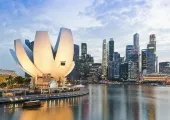A Brief Introduction to the Construction of Modern Wuhu
Modern history of Wuhu
In 1876, the "Yantai treaty" signed by China and Britain opened Wuhu and Wenzhou in Zhejiang Province to four cities as trading ports. The signing of this unequal treaty not only brought great impact to Wuhu's national economy and caused abnormal development, but also opened the door of Wuhu's opening to the outside world. In 1918, the import and export value of Wuhu customs reached 3.5 [[%]], which was one of the largest trading ports in the Yangtze River. With Wuhu and Shanghai as the starting and ending points, the Wushen canal closely connects Wuhu with the economy and culture of Jiangsu, Wuxi, Nanjing and Hangzhou. By the Qing Dynasty, Wuhu had formed a vast rice market, which was called the four largest rice markets in China together with Wuxi, Changsha and Jiujiang. After Wuhu opened its trading port, a large number of Western commodities were sold to the mainland through Wuhu, and a large number of foreign firms and companies entered Wuhu. At the same time, the spread of advanced science and technology also stimulated the development of modern industry in Wuhu. The first batch of national industries in Anhui Province were established in Wuhu. In 1883, Wuhu set up a cable telegraph line, which was the first city in the province to use telegraph; in 1897, Yixin (machine milling) rice noodle company was put into production, ranking first in the same kind of factories in the country at that time; in the 1930s, it also opened civil aviation, flying to Shanghai and Wuhan. After entering the 20th century, Wuhu industry and Commerce has developed to more than one hundred kinds, five or six thousand, becoming the birthplace of Anhui modern industry and one of the economic centers of the Yangtze River Basin.
Figure 1: list of modern buildings in Wuhu from top to bottom: gejishan hospital, St. Jacques middle school (No.11 middle school) and Wang Jiaxiang memorial hall, the former site of archaic ship and Notre Dame (the first people's Hospital), old Wuhu customs, Wuhu Catholic Church, yugengshan building complex (including Neisi middle school), with special marks made by the British Consulate of zhongjiangta
Gejishan hospital
St. Jacques middle school
The site of the British archaic ship
Former site of Notre Dame
Old Wuhu customs
Wuhu Catholic Church
Yugengshan architectural complex
Site of Neisi middle school
Zhongjiang tower
British Consulate General and ancillary buildings in Wuhu
Popular Trip Moments
Popular Travel Types
Popular Attractions
Popular Ranked Lists
Popular Destinations
Recommended Attractions at Popular Destinations













Site Operator: Trip.com Travel Singapore Pte. Ltd.






